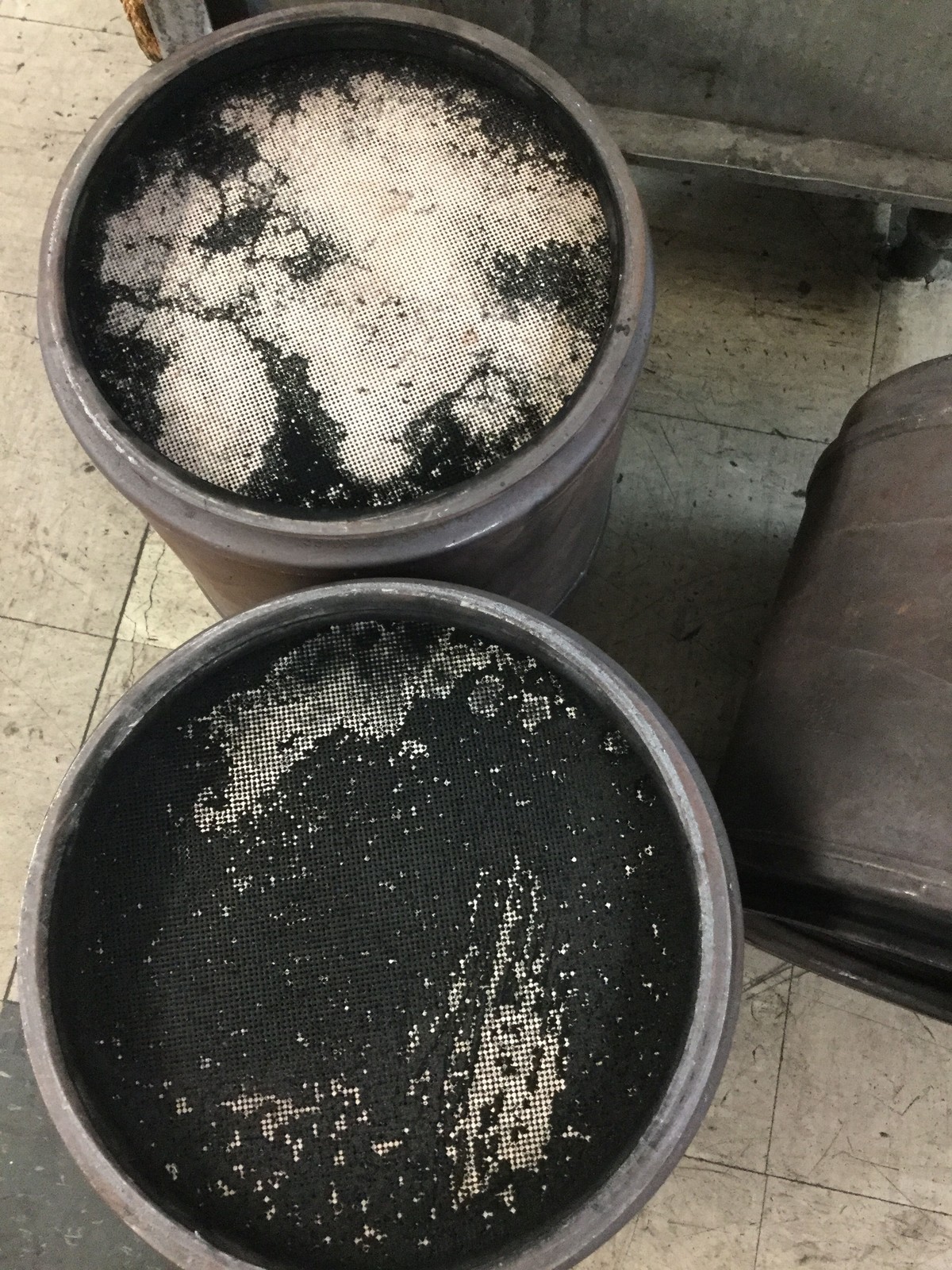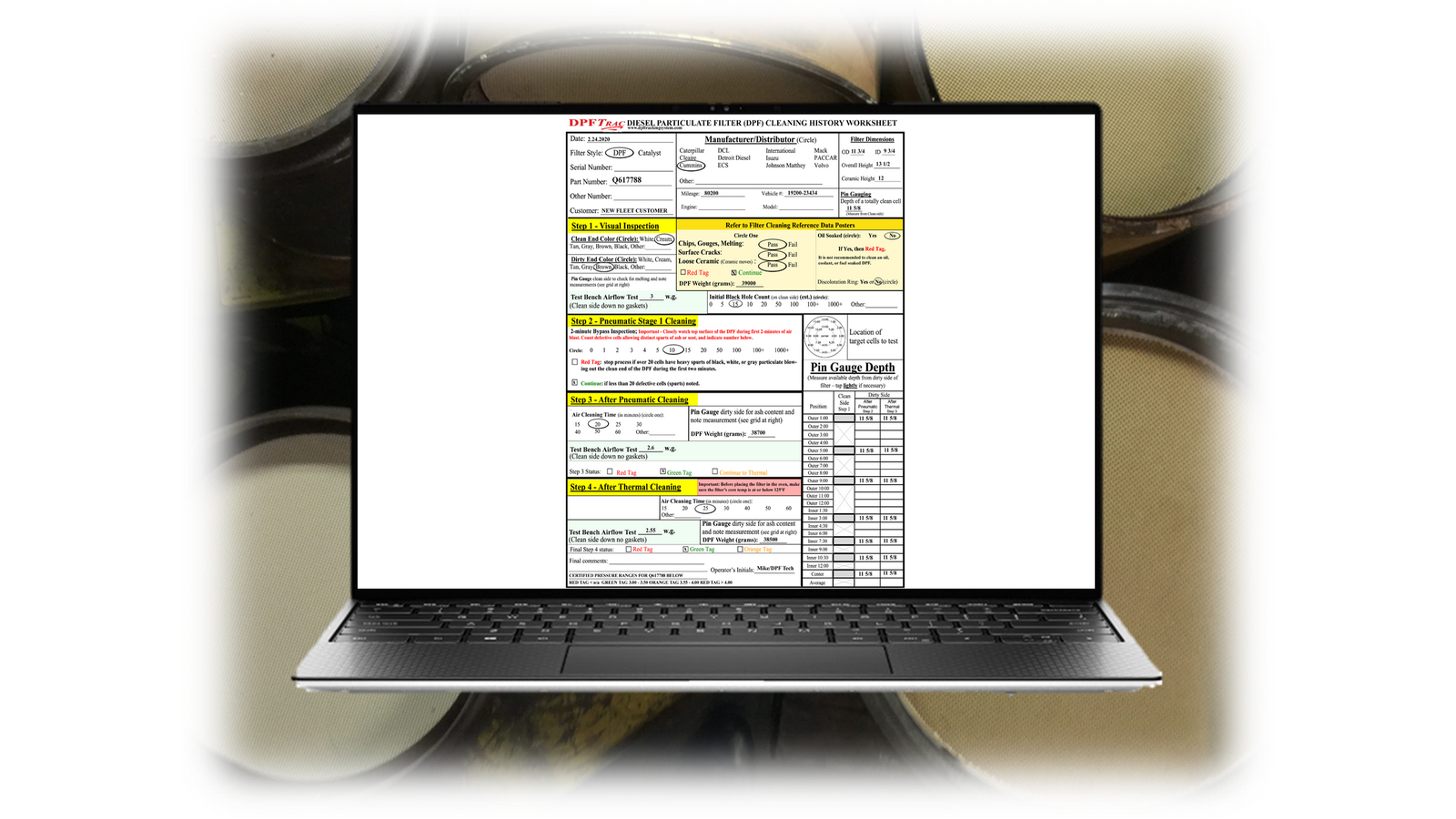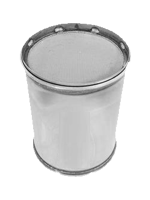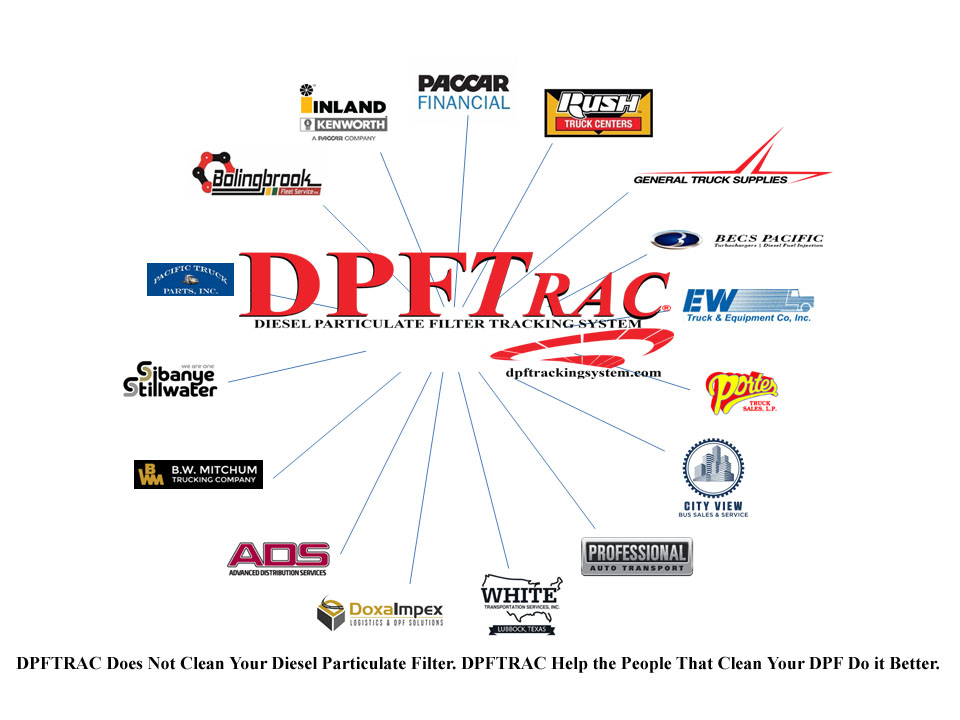If you are in any way involved with heavy-duty clean-diesel vehicles and equipment, you may have never asked yourself vital operational and maintenance questions about DPF cleaning. If you had, you would now be saving thousands of dollars, minimizing production downtime and protecting the environment. You are guaranteed to see these benefits if you adhere to three principles:
1. Utilize a standardized and trusted DPF cleaning methodology,
2. Only use the industry’s leading DPF cleaning equipment,
3. Deploy an industry-leading cleaning and tracking software to uniformly clean, effectively track and measure the cleanliness of DPFs.
 DPF CLEANING EQUIPMENT MADE BY FSX INC
DPF CLEANING EQUIPMENT MADE BY FSX INC
FSX Inc. is headquartered in Granite Falls Washington and founded by Cole Waldo. Since its inception, FSX has remained the preeminent national leader in DPF cleaning machinery and technology. OEMs and dealerships like Kenworth and Peterbilt (PACCAR companies) trust FSX machines to clean their filters more effectively than other DPF cleaning companies. FSX noticed that RAVHD, a Southern California company located adjacent to the Port of Los Angeles, had developed a near-perfect software companion for the FSX’s DPF cleaning equipment named Diesel Particulate Filter Cleaning and Tracking System (DPFTRAC) . The software’s DPF cleaning and tracking functions are “powerful,” according to Waldo. The DPFTRAC “user interface brings a lot to the customer.”
DPFTRAC WAS CREATED BY RAVHD - LOCATED ADJACENT TO THE HEART OF THE PORT OF LOS ANGELES
RAVHD is a Southern California technology firm specializing in heavy-duty diesel equipment IOS and web-based software that clean, track and maximize the removal of dangerous PM 2.5 from diesel particulate filters. PM 2.5 are diesel-originated pollutants that cause heart attacks and other health issues. The Environmental Protection Agency places limits on the amounts allowed into the environment. RAVHD’s technology and management staff have collectively over 50 years of transportation, finance, and software development and maintenance experience. RAVHD ’s customers include PACCAR , Kenworth in the USA and Canada, Sibanye Stillwater , and many other industry leaders focused on reducing particulate pollution in the environment.
DPFTRAC PROVIDES TECHNICIANS WITH OEM DATA FOR EFFICIENT AND ACCURATE CLEANING
DPFTRAC is certain to be received with delight by dealerships and truckers focused on saving time and money. Six years ago DPFTRAC aimed its eye on harnessing the vast amount of annual DPF cleaning data FSX’s DPF cleaning machines generate in North America and Canada. This data, placed in the hands of FSX authorized DPF cleaning technicians, will assist them to best serve their DPF cleaning customers more efficiently and clean their DPFs with an even more automated and uniform precision. This saves time and money.
DPFTRAC , the world's first automated cleaning guide and smart application for FSX DPF equipment, originally debut alongside FSX cleaning equipment in Las Vegas at the Heavy Duty Aftermarket (HDAW) convention and returned annually with a cache of impressive corporations as clients. The DPFTRAC software application has captured 1000s of DPF cleaning work orders since launch. This represents a treasure trove of DPF cleaning data points that provide managers with essential details of focus inside their DPF cleaning facilities’ maintenance process. With DPFTRAC , fleets, dealerships and truckers now have the ability to clean, then track any DPF’s performance whether it’s being maintained in Mississauga, Ontario Canada or Montebello, California.
EASILY ADOPTED BY NEW-TECHNOLOGY-SAVVY DPF TECHNICIANS
DPFTRAC is Apple iPad-based and web-based and is easily adopted by today’s technology savvy DPF technicians who use Macintosh, PCs and Android devices. “Easy to use” is a recurring response from technicians using the DPFTRAC smart software. A multitude of rich features have been packed into DPFTRAC's powerful application including:
1. Text messaging,
2. Email PDF work orders,
3. Auto-generated and auto-filled DPF cleaning history worksheet in PDF format - a perfect way to electronically maintain DPF cleaning records for future reference, performance tracking, and compliance adherence. No more oil-smudged or unreadable paper forms to present to customers or agencies,
4. Wireless printing,
5. Five steps or less to clean a DPF according to FSX and OEM’s cleaning standards,
6. 100s of OEM and AFTERMARKET DPF pressure ranges and filter dimensions updated often,
7. Automatically determine operating status of DPF: green (good), orange tag (acceptable), red tag (condemned),
8. Strictly follows FSX’s DPF cleaning process considered the gold standard preferred by OEMs and dealerships,
9. Instructively navigates the DPF technician serially through FSX’s recommended DPF cleaning process.
This approach means fewer mistakes and more accurate data. All of which leads to more efficient DPF cleanings.
Save MONEY, ELIMINATE Truck AND EQUIPMENT Downtime, Protect the Environment
How much money can be saved by maintaining your after-treatment systems (DPF, DOC, SCR)?
Thousands of dollars.
What insight is gained by using DPF cleaning data points to track the progress of DPF cleanings?
View the roadmap to the history of an engine’s performance which can predict longevity points.
Can productivity down time be predicted or minimized?
Yes. Production and travel down time is proven to be prevented or minimized when after-treatments are properly diagnosed, cleaned and tracked.
Does tracking DPF cleanings deliver benefits to the truck driver, fleet and environment?
Yes, absolutely. Analyzing a DPF’s historical cleaning data can accurately present optimal cleaning interval points which, when properly acted upon, are shown to directly translate into fuel savings costs for the truck driver and fleet owner. It’s a fact, clean and properly maintained DPFs prevent harmful particulates from entering the atmosphere.
DPF CLEANING TO OEM SPECIFICATIONS
PACCAR found that FSX equipment “cleaned filters nine percent more effectively than other [DPF cleaning companies] that PACCAR Parts tested, says Jeff Sass, General Marketing Manager for the Renton, Washington-based company. The TrapBurner can clean the filter to original equipment makers’ specifications.”1
DIESEL PARTICULATE FILTER CLEANING – WHAT IS IT?
DPF cleaning is messy, literally. Soot particulates are dirty and when trapped inside a DPF it is an ugly sight. After cleaning the DPF the removed soot must be safely disposed of. DPF cleaning can be time consuming and is often considered a nuisance by the truck driving community.
Performing periodic maintenance on your DPF and other components of the after-treatment system is comparable to performing an oil change, less frequent, but a necessity. If DPF cleaning is ignored, it can cost the truck driver or fleet manager large sums of money and unexpected downtime.
The following steps ensures a thoroughly cleaned DPF: a visual inspection step, a PIN testing step, the bypass inspection step, and the air cleaning and thermal cleaning (if needed) step.
1. A visual inspection will reveal DPF surface damage such as surface cracks, loose ceramic, gouging and or melting. A visual inspection will also reveal any evidence of oil, any discoloration and initial black holes. The first recording of the DPF’s air flow pressure will show how dirty the DPF is. It is this beginning pressure reading that will serve as a benchmark throughout the cleaning process where the DPF will fall in either a red tag, orange tag or green tag range.
2. PIN testing measures a DPF’s cell depth to verify healthy DPF cells and to reveal any breached cells. To do so, a metal PIN is inserted into the clean end of the DPF’s cell ports. There is generally a 3/8 inch plug felt at the bottom of most DPFs cells during PIN testing. At its core, a DPF prevents soot and ash from entering the atmosphere. So there should be minimal signs of bypass of soot and ash from one end of the DPF to the other. DPFTRAC maintains a database of OEM preferred measurements and pressure ranges of thousands of DPF’s readily used by the technician for base comparison.
3. The Bypass inspection simulates a DPF’s performance while in production and any damaged cells will reveal themselves during this two minute test using the FSX TrapBlaster machine.
4. High pressure air cleaning of both ends of a DPF for 15-30 minutes will extract soot and ash from a DPF. This is done using the FSX TrapBlaster. A thermal cleaning takes longer than air cleaning but when used in conjunction with air cleaning this process removes any soot and ash that air cleaning is not able to. When done in conjunction, the DPF will be returned to industry standard operating specifications.
WHEN IS IT TIME TO CLEAN A DPF?
DPFs should be cleaned whenever one or more of the following conditions are encountered:
A check engine light condition occurs.
A turbo goes bad.
An Exhaust Gas Recirculation (EGR) goes bad.
Truck is running very sluggish.
DPF maintenance light is on.
Miles per gallon has decreased significantly.
Identify frequency of hauls (Short vs Long).
- Short Hauls – clean sooner rather than later because of increased idling time which causes the accumulation of soot and ash.
- Long Hauls – clean annually for best performance results.
DPF should be cleaned periodically for a number of reasons:
1. Maintaining Efficiency: Over time, the DPF can become clogged with soot and other particulate matter, reducing its efficiency and increasing emissions. Cleaning the DPF can remove this buildup and restore the filter's efficiency, helping to reduce emissions and improve air quality.
2. Meet Emission Standards: Regular DPF cleaning helps trucking companies to meet emission standards set by the government and regulatory bodies. This can help to avoid fines and penalties for non-compliance.
3. Prevent DPF Failure: If a DPF is not cleaned regularly, the particulate matter can build up and cause the filter to fail. This can lead to costly repairs or replacement of the DPF, as well as increased emissions.
4. Improve Fuel Efficiency: A clogged DPF can reduce the engine's performance, leading to increased fuel consumption. Regular DPF cleaning can help to improve fuel efficiency and reduce fuel costs for trucking companies.
5. Protect engine: A clogged DPF can cause engine damage, regular cleaning helps to protect the engine and prolong its life.
THE DATA BEHIND THE DPFTRAC TECHNOLOGY
Earlier, during DPFTRAC ’s initial public release, for a 16 month period DPFTRAC software processed over 3,000 DPF work orders through its production system. Each DPF cleaning produced quantifiable data markers that directly correlated to when and where monetary resources could be saved and/or productivity could be enhanced and uninterrupted. They include:
Optimal cleaning intervals,
A fleet’s maintenance behavior,
A truck’s engine performance,
The life expectancy of DPF.
Using data obtained from one fleet that owned 125 trucks (model years 2008 to 2012), DPFTRAC showed the following:
85% (106) of the fleet’s trucks were brought in for DPF cleaning service once during the 16 month period
60% (64) of the fleet’s trucks were serviced multiple times (DPF cleanings)
9% (10) of the fleet’s trucks were equipped with a new DPF (different serial number from the prior recorded DPF cleaning) or the owner installed another DPF from within their fleet since their last DPF cleaning. The DPF replaced was red tagged or condemned or non-usable.
DPFTRAC ’s data provided information that can result in significant savings such as:
For those red tagged DPFs that were cleaned, whose truck had engine issues that were addressed, the DPF returned for service, as expected, one year later for cleaning.
For those red tagged DPFs that were cleaned and whose truck had engine issues that were not addressed, the DPF returned for service two months later and required another cleaning.
For those red tagged DPFs that were cleaned but showed no improvement after cleaning yet returned to production, these filters progressively deteriorated. This usually means the vehicle will use more fuel or not operate at all. The deterioration of the diesel engine will follow resulting in degraded engine performance.
THE INTELLIGENCE OF DPFTRAC DIESEL PARTICULATE FILTER TRACKING SYSTEM
DPFTRAC does all the following and even more:
Diagnose a DPF’s condition based on data entered by the DPF technician,
Instructs the DPF technician in a step-by-step process how to clean DPFs to OEM standards,
Track DPF cleanings by customer/company name,
Track DPF cleanings by DPF part number,
Track DPF cleanings by serial number,
Track DPF cleanings by DPF manufacturer,
Track DPF cleanings by Truck (VIN, Vehicle Number),
Track DPF cleanings across North America with two pieces of information (part number and serial number).
Milton Munoz of Arma Mate, a heavy duty truck repair facility in Long Beach California shared “My technicians use engine diagnostic tools and the airflow (pressure range) data from DPFTRAC to troubleshoot. DPFTRAC is a superior and smart system that provide insight to where the faults are on the engine side or on the after-treatment side.”
DPF CHECK ENGINE LIGHT ON? DPF REGENERATION OR CLEANING?
The DPF check engine light appears on your dashboard and your truck will not perform a parked regeneration. Now what? Your truck heads to the service department, its engine is diagnosed and its DPF is removed and cleaned. If the cleaning location and technician is thorough, a DPF cleaning report will be provided showing how well the DPF was cleaned. What exactly do these cleaning reports tell you (or what should they tell you)?
What was the original condition of the DPF (how dirty or full of ash and soot was the DPF prior to cleaning)?
Were there visual observations noted: cracks, melting, chips, gouging, oil soaked?
What type of cleaning was performed: air, bake, wet wash?
What is the final condition of the DPF (i.e., how clean is the DPF after the FSX cleaning process)?
We will assume the DPF in our example above is taken to a DPF cleaning facility that has relaxed inspection procedures and/or the DPF is sped through the cleaning process without an initial inspection. Then the DPF is air cleaned and baked. Afterwards it is reinstalled on the truck and is placed back into service. With this approach however, one month later this same truck will not be able to perform a parked regeneration and the DPF must be removed once again for maintenance.
DETERMINE WHY A DIESEL PARTICULATE FILTERS FAIL
A DPF’s failure can be easily determined. Identify where the DPF’s problem began by simply asking a few questions:
What kind of fuel was the truck using?
What kind of oil was being used?
What kind of antifreeze was being used?
Was the regeneration process skipped regularly?
Was the after-treatment system serviced before?
Know what can cause your DPF to fail:
The truck driver neglected to adhere to regular maintenance schedules,
The DPF cleaning facility neglected to properly inspect the DPF. If the facilities technician inspected the DPF they would have found that the DPF had discoloration and was internally plugged. A failure to inspect the DPF meant a plugged DPF was reinstalled on a truck creating more back pressure internally thus causing the turbo to fail,
At a bare minimum, if your DPF cleaning facility has tracked their cleaning process and performed the proper FSX emphasized inspection procedures as contained in DPFTRAC, a DPF would have been replaced along with the DOC. This would save the driver half the cost and would have alerted her of the engines condition,
A proper DPF inspection will also show the technician that a problem is looming inside the engine which requires immediate attention by the truck driver. For example, if engine injectors are leaking too much diesel, this leakage will eventually make its way into the DPF. It settles and subsequently bakes into a horizontal wall which plugs the exhaust flow system. If the DPF is simply returned to service, this plugging increases back pressure and will cause the turbo to malfunction.
CONCLUSION
Truck drivers, fleet managers, shop owners and dealerships must all be proactive. Smart managers should deploy DPFTRAC to help DPF technicians and professionals identify and manage data generated during the DPF cleaning process and to more uniformly and effectively clean diesel particulate filters. DPF cleanings done by technicians that follow DPFTRAC's easy step-by-step, automated and guided process which adheres strictly to FSX Inc.’s cleaning process provides measurable financial savings for truck owners, drivers, fleet owners, shop owners, dealerships and municipalities.
In the transportation industry, time is financially measureable. One of the trucking industry’s primary goal is to keep trucks on the road as much as possible while minimizing downtime. The trucking industry must make intelligent decisions for repairs based upon solid and reliable DPF operating and maintenance data. DPFTRAC provides this intelligence.
It can be a little overwhelming for a truck driver or fleet manager to remember all the guidelines presented here. The primary goal of a truck driver and fleet manager is to efficiently maximize the number of trips a diesel trucks makes. Preventative maintenance ensures a truck is operating on the road. This translates into more revenue not less. DPF cleaning and after treatment maintenance, in general, is a necessity and ignoring it will cost unanticipated time and expenses.
DPFTRAC is the only DPF cleaning and tracking software on the market that can effectively manage FSX equipment DPF cleaning history and save money while doing so. When used in companion with FSX's cleaning equipment, DPFTRAC ’s innovative technology paves a trail which is unbridled and guarantees to provide truck drivers, technicians, fleet owners and dealerships with the analytical data needed to effectively manage after treatment issues while preserving precious resources. The future of diesel particulate filter cleaning and tracking has boldly arrived and it is packed inside DPFTRAC Diesel Particulate Filter Cleaning and Tracking System .
[1] (source: OverDriveOnline.com)




